In the USA, at least, the Fiat 124 Coupe dwells in the long shadow of its Spider sister, but globally, the closed car may have been the more important vehicle. It was also the better seller of the pair. 80,000 more coupes were made than Spiders, despite the coupe expiring a decade before Pininfarina chose to axe the Spider in favor of building bodies for the Cadillac Allanté in 1985.
Both cars were built off the bones of the excellent Fiat 124, a car that was far more conventional than what Fiat chief engineer Dante Giacosa had in mind but which proved to be one of the best European family cars of the sixties. Fiat had a lengthy tradition of building coupes and convertibles for flashy Italians out of regular car raw materials, and the 124 Spider corresponded fairly closely to its forebears, but the 124 Coupe was different.
The design for the 124 Coupe was created in 1965 and 1966, just as another famous coupe was taking the world by storm: Ford’s Mustang. Although Ford’s pony car spawned domestic imitators including the AMC Javelin and Chevrolet Camaro, the seismic impact of its sales performance was felt as far away as Tokyo and Turin.
At the same time, Fiat had new Italian competition from Alfa-Romeo’s Giulia 1300 GT Junior and Lancia’s Fulvia coupe, both four-seat cars that lightly tread into affordable territory. These cars were still more expensive than any Fiat, but unlike coachbuilt Lancia Appia coupes or the earlier 101-series Giulietta Sprint, they were playing in Fiat territory, and Turin had to respond.
The 124 Coupe was not stylistically linked to the Mustang, but the idea of a sporty coupe that ordinary people could buy and which had a useful back seat was a good one, and Giacosa later pointed out that the 124 Coupe’s biggest innovation over earlier Fiat coupes and other small GTs was that it had room for four adults.
The 124 Coupe slotted right in under the Alfa and the Lancia, but used production techniques very similar to those of the Mustang. Fiat made it very cost effective, but still stylish and fun. It helped that the base car was very sophisticated to begin with.
The 124 Coupe was the very first European sporty car in the style of the Mustang, but it certainly wouldn’t be the last, and it debuted one of Fiat’s best-ever engines, Aurelio Lampredi’s famous Fiat Twin-Cam. In the 1970s, Ford itself reacted to the growing popularity of the smaller Mustang-imitators by downsizing the original into the Mustang II, and for one brief year the Fiat and the Mustang competed directly.
Creating the Fiat 124
In the early 1960s Fiat’s attention was not on building fancy coupes but rather on volume cars made in new ways. After the debut of the Mini, Giacosa focused his efforts on front-wheel drive proposals and updates to existing platforms, but much of this work was still theoretical until the debut of the Autobianchi Primula in 1964.
The Primula was only a taste of what was to come, and Giacosa was consumed with many advanced projects including proposals for a mid-engine sports car and a set of advanced prototypes aimed at replacing Fiat’s 1300 sedan.
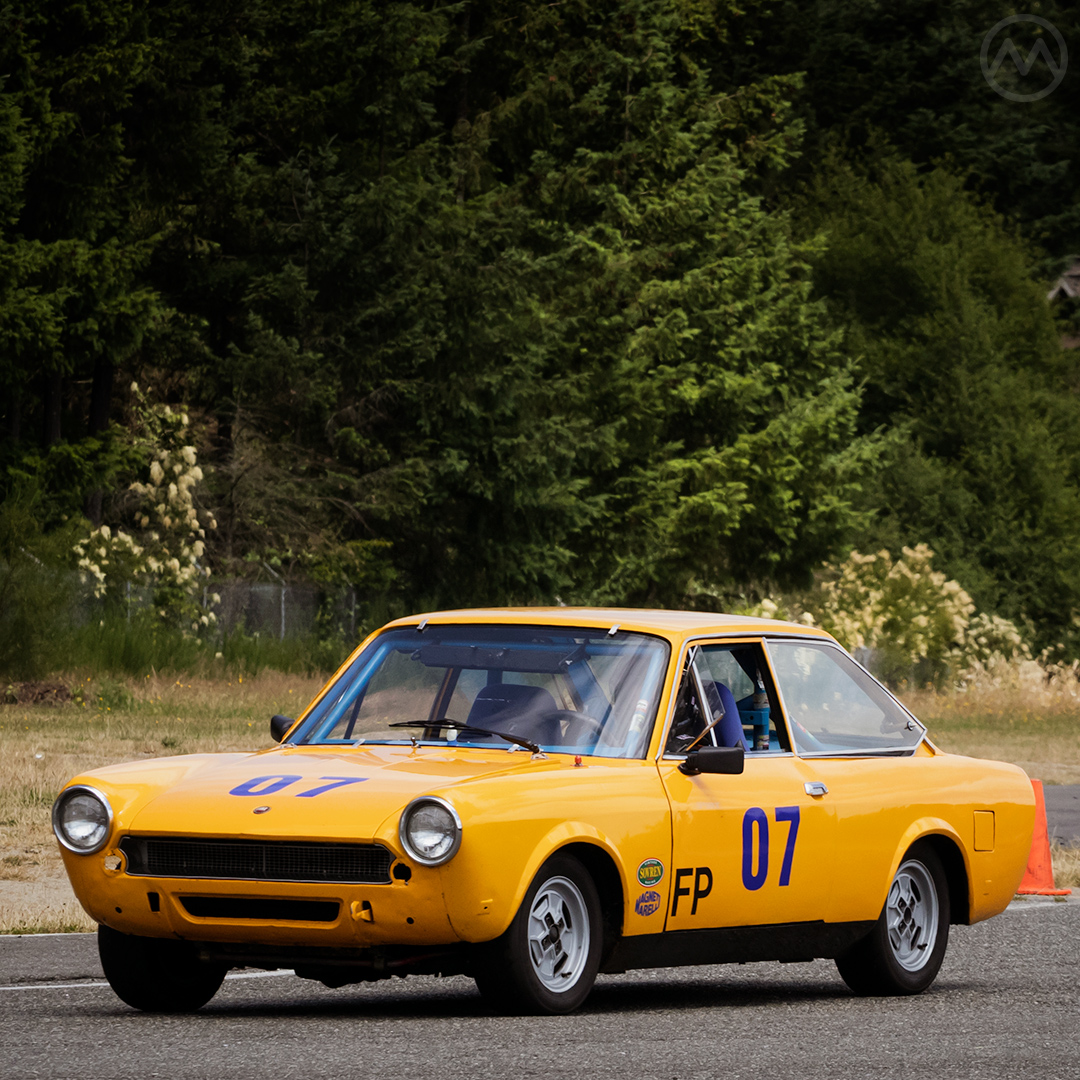
Fiat’s then-CEO, Genoese octogenarian ex-economics lecturer Vittorio Valletta (often referred to as “Il Professore”) wasn’t really sold on Giacosa’s front-drivers as replacements for the backbone of Fiat’s lineup, and while the Primula proceeded as an Autobianchi where it would be tested out in a low-risk way, Valletta and various higher-ups at Fiat recalled engineer Oscar Montabone from Simca to design a competing proposal.
Montabone’s idea was entirely conventional, a regular front-engine, rear-drive, three-box sedan using largely proven mechanicals. While Montabone’s project got the nod from Valletta over the series of “123” prototypes Giacosa had created, some of the elements of those prototypes were incorporated into the 124, namely it’s lightweight construction and all-around disc brakes, a real novelty for any cheap car in the 1960s.
Its specs read mostly like a sports car’s in that era, even with the basic 1,197-cc engine that came standard in the sedan. The car’s poised suspension, double wishbones with coil springs and an anti-roll bar in front and a rigid axle with trailing arms, coil springs, a panhard rod and an anti-roll bar in back, resulted in engaging handling that entirely belied the regular 124’s plain looks.
Because it was mostly a clean-sheet design, though it reused the Fiat 1500’s gearbox, it was possible to plan sporty 124s right from the beginning and relatively easy to engineer them.
There would be two sporting versions. The usual open car would require structural changes, and it would be produced, as on the Fiat 1200/1500 Cabriolet, by Pininfarina. This time there would be a sporty coupe version baked in from the start to take on the encroaching Alfa and Lancia Coupes, neither of which had an engine larger than 1,300-cc.
The Mustang Code
The Ford is best remembered for the many muscle cars that sprang up around it, but the Europeans were watching as well, and a host of new European coupes would be born from its success. The legacy of the Fiat 124 Coupe isn’t so much in the individual idea as in the execution. It was the first really affordable European car to try out this formula.
There were proper four-seat European coupes before Fiat’s 124, including Fiat’s own 1500 Coupe, built by Pininfarina on the same line as the 1200/1500 Cabriolet. Only 2,200 of these coupes were made between 1960 and 1966, and this car was very much in the mold of previous small Fiat Coupes: a coachbuilt car for people who wanted something really different. The Similar Peugeot 404 Coupe, also built by Pininfarina, had four seats and a similarly lofty price tag, far in excess of a 404 sedan.
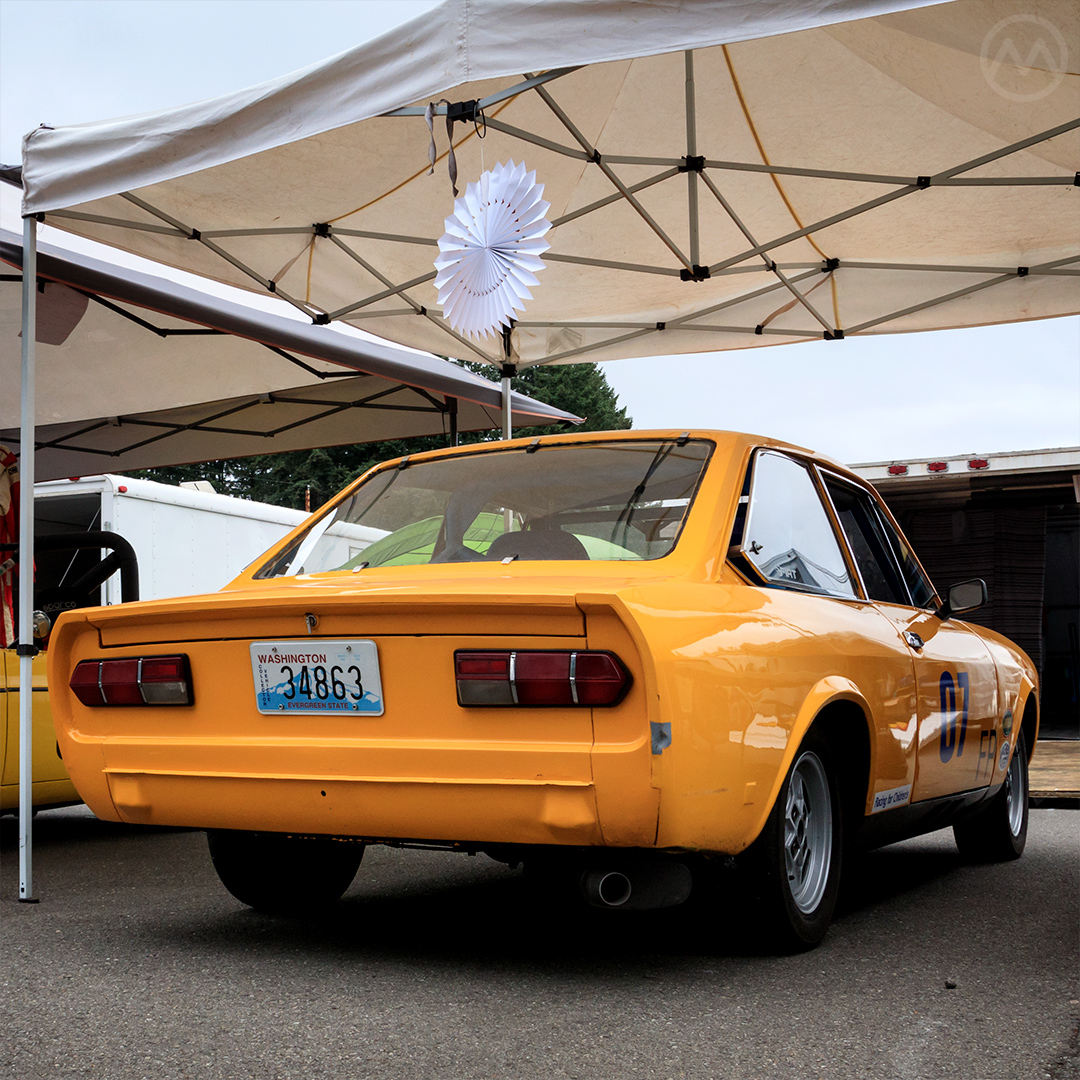
Such cars were not targeted at volume buyers. Cars like the Opel Rekord P2 Coupe and Ford Consul Capri were more approachable, but still more in the mold of a big 2-door car, like scaled down 2-door Detroit hardtops. Sports cars sometimes had nominal back seats, but no adult could ever fit in the back of an MGB/GT.
Alfa-Romeo’s 105-series Giulia Sprint, introduced in 1963, was more within the range of ordinary people if still not “cheap.” Alfa advertised it, at first, as a full four-seater, though its rear seat was cramped compared to the sedan it was based on. Not surprisingly, since 6.3 inches (16cm) were cropped out of the wheelbase to produce the coupe. Alfa soon listed it as a 2+2.
But in 1965, Milan added the GT Junior version, an even more affordable 1,290-cc 1300 GT Junior. This was a truly affordable car by Alfa standards, and it became the best-selling of the 105-series Alfa Coupes, with 91,000 built over a ten year period. In the meantime Lancia launched the Piero Castangnero-styled 1,216-cc Fulvia Coupe, 5.9 inches (15cm) shorter in wheelbase than the boxy Berlina. Also not really a full four-seater, but even more affordable than the Alfa.
To create a volume-production car that could take on these vehicles, Fiat worked to keep as much of the 124 sedan as it could in tact. It would not lose any wheelbase, to ensure maximum passenger space, and to give it the long-hood/short-deck proportions that suited the Ford and the Alfa so well, Fiat actually made the coupe larger than the sedan.
Creating the 124 Coupe
Unlike the 124 Spider, which was styled by Tom Tjaarda at Pininfarina, the coupe was styled in-house at Centro Stile Fiat. It’s often attributed to Mario Boano, who did the actual design work on the first version of the coupe, but in the mid-1960s it was really his son Gian Paolo, who ran the style center.
Felice Mario Boano had worked with Battista Farina in the 1930s, then for Giacinto Ghia, ultimately buying Ghia with businessman Giorgio Alberti after Ghia’s death. In 1948, the elder Boano had hired marketing man Luigi Segre to drum up business as Segre spoke english and Boano did not. Segre did a good job, but in courting Chrysler and prototype business, he and Boano gradually fell out, and the Boanos founded their own eponymous Carrozzeria in 1954 after selling off Ghia to Segre.
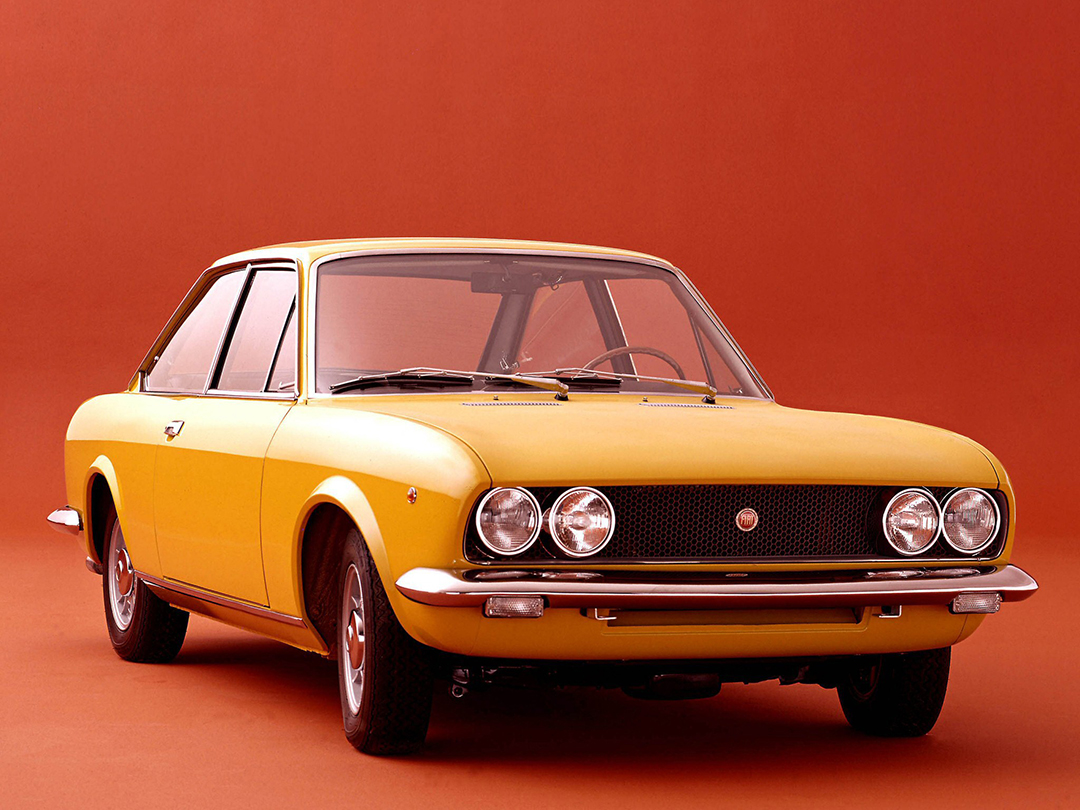
Carrozzeria Boano closed in 1957 as Mario Boano was a better designer than businessman, and both Father and Son ended up working mostly for Dante Giacosa as consultants before finally being brought in-house to head up a formal design staff, Centro Stile Fiat. This was not the only design group Fiat had, but it had control over the mainstream production designs. In 1959, Mario largely passed the torch on directing the staff to Gian Paolo, who would oversee Centro Stile for the next two decades.
Under orders to make things cost effective, the Boanos did a good job remaking the 124 platform into a pretty coupe with a tall, airy greenhouse.
Structurally, the 124 Coupe would use much of the sedan’s structure and mechanical pieces almost unaltered, including its 95.3-inch (242cm) wheelbase. The rear was stretched by about three inches (7.5cm) and the cowl moved back a similar amount to give it different proportions. The height was reduced by about 2 inches (5cm), which resulted in a very different looking car even if most of the pieces underneath were the same.
Centro Stile may have been in contact with Pininfarina, as the front styling of the original coupe bore some resemblance to the Spider, but the rest of the car looked like neither the sedan nor the Spider, and it had sedan-like room.
Many of the sedan’s mechanical pieces were used, though the coupe had stiffer springs and thicker anti-roll bars. What was not the same, however, was the engine. The 124 had an all-new 1.2-liter overhead valve engine, and the coupe’s engine was based on the same block, but ex-Ferrari engineer Aurelio Lampredi helped turn the powerplant into a sweet-revving twin-cam that was cheaper to manufacture and maintain than Alfa’s or Lancia’s V4.
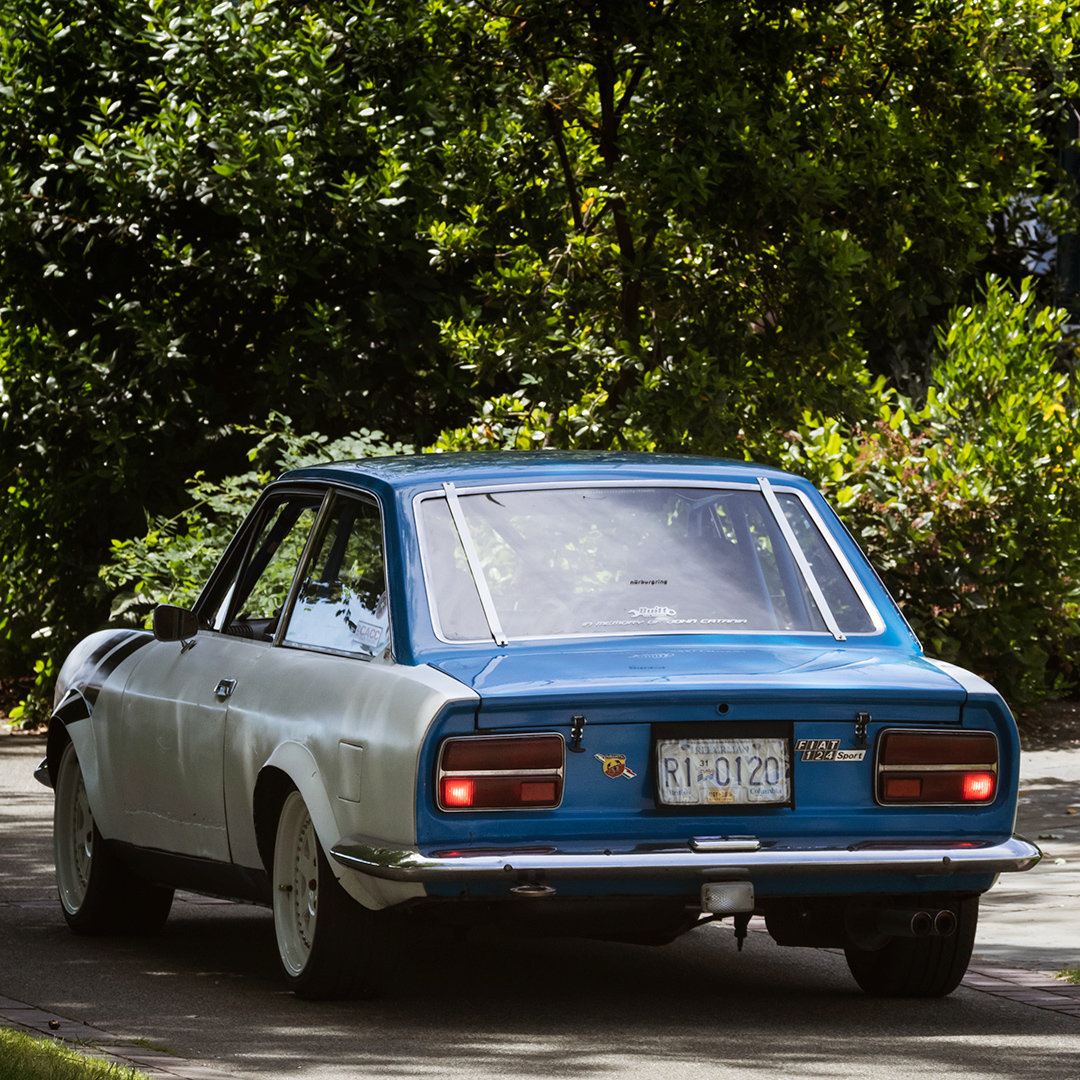
A Ferrari man for nearly a decade and responsible for many Ferrari racing V12s in the 1950s, Lampredi was displaced at Ferrari by Vittorio Jano, whom Ferrari got in a deal to take over Lancia’s racing program in 1955. After that, he went to Fiat to design engines for the people, and he would be responsible for millions of Fiat powerplants.
To make the new engine stronger and sports car appropriate, Lampredi gave it a three-piece light alloy, cross-flow, twin-cam head with what he called a “polyspherical” combustion chamber. It was bigger, too, bored up to 1,438-cc. The camshafts were driven by a rubber belt rather than chain, which at the time seemed radical. Fiat cautioned that the belt needed changing every 36,000 miles, but it was also much easier to change than a conventional cam chain.
The result was a huge increase in power. Where the 124 sedan made about 65 horsepower, the high-winding twin-cam Coupe made 90 or 96, depending on the carburetors (twin Weber carbs were standard in Europe, but in the USA sometimes a single Weber 34 was fitted) and tuning. The 124 Spider got a five-speed gearbox (really four plus an overdrive) out of the box, but the Coupe made due with a four-speeder and a higher final drive. Because of the additional size, the Coupe weighed about 150 pounds more than the sedan. It went on sale in the spring of 1967, about four or five months after the Spider.
124 Coupe AC, BC, and CC
The 124 Coupe was at first aimed at its Italian competitors, and the original design was the series “124 AC.” Early on, it had a torque-tube rear end, later replaced by the panhard rod after about a year. It was also given the five-speed gearbox in early 1969, which made it a much more flexible car than even some rival sports cars.
About 20% cheaper than the Lancia or the Alfa and more practical than either in every respect, the 124 Coupe was an instant hit. The original AC coupe was built from the spring of 1967 until late 1969, though 1970 models in the USA were all AC units. 113,000 ACs were made, which was a huge number considering it was only built for about four years. It took Alfa-Romeo a decade to build it’s 91,000 GT Juniors.
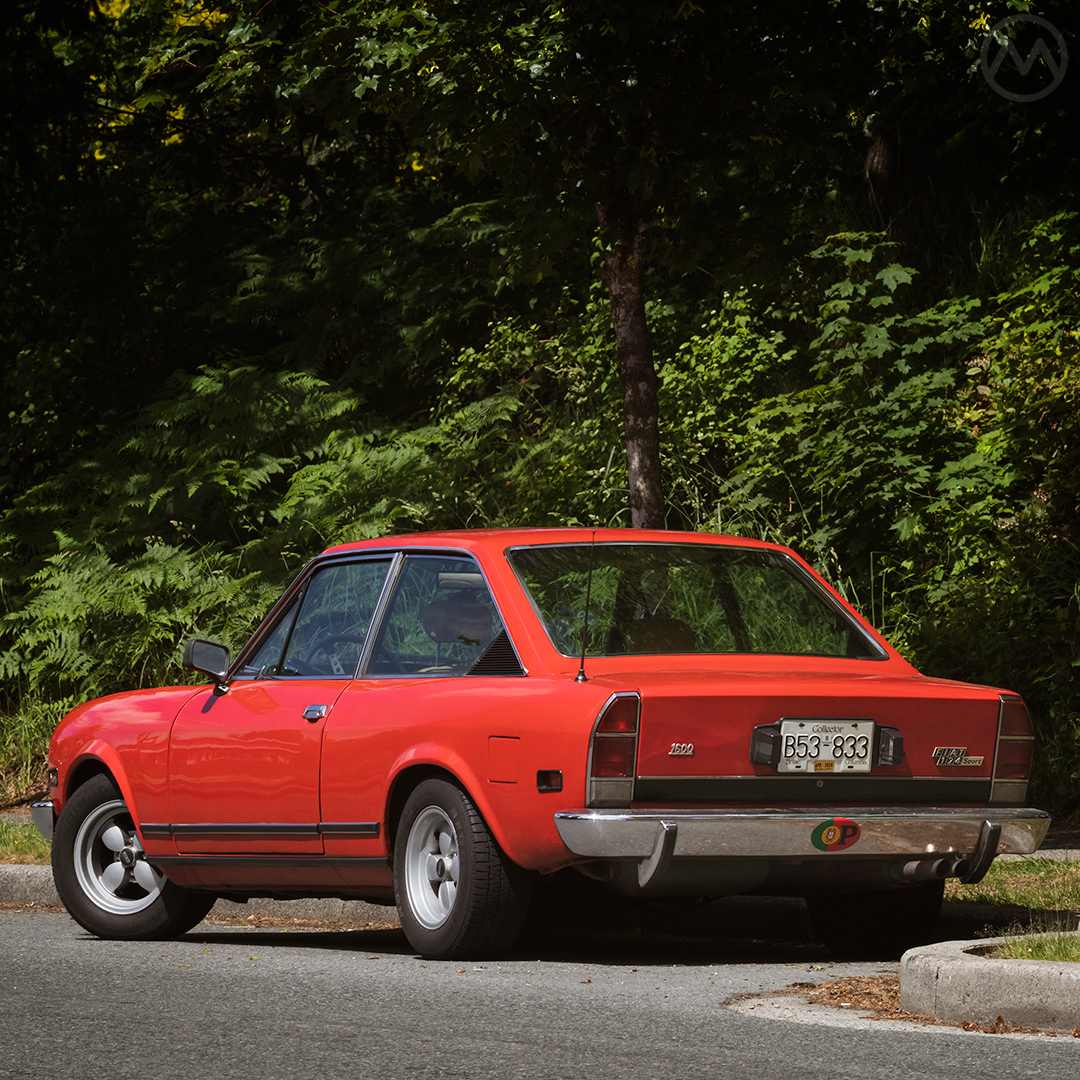
In 1970, the AC gave way to the BC, with new front and rear styling done by Gian Paolo Boano and an altogether more 1970s look. The delicate detailing and tall greenhouse were preserved, but the BC looked much more muscle-car lite than the AC had. This reflected the influence of the Mustang and the many sports coupes that had arrived in its wake.
The BC got even more power (about 10%) and a second version of the twin cam, now in 1,608-cc. Eventually it switched over altogether to the larger engine. With its quad round headlights and slim bumpers, the BC was probably the best looking Fiat 124 Coupe, and it sold just as well as the first. 98,000 of them rolled off the line in just three years.
The BC gave way to the CC at the beginning of 1973 and a rather unfortunate restyle up front, with a big opening carved into the front fascia and a brand new rear bumper. This look was only accentuated on impact-bumper equipped U.S. models. As emissions rules began to bite, the 1,608-cc twin cam was revised into a 1,592-cc unit, and then CCs (and all U.S. model CCs) were fitted with the larger 1,756-cc engine.
Despite emissions equipment and only a single carb, Euro-market CC’s would do 118 hp, while U.S. versions were down to 93. The car’s handling was still as good as ever, and the car only seemed dated in the sense that many similar cars had grown up around it.
Miniature Mustangs
When the AC was launched in the spring of 1967, the Ford Capri was 18 months away. Europeans were never going to buy coupes in the numbers that Americans did, but both Ford of Europe and Opel understood that the same ideas could work very well there, and that there was a willing audience of young buyers. The Capri and Manta were accordingly very popular. In Japan, Toyota was the first to build a similar type of car, the 1970 Celica.
A good driver and practical, in America the Fiat 124 Coupe at first defied categorization. In the USA Alfa’s junior was not offered, and Lancias were only imported in small numbers. As it was the first of the “European ponies,” it really had no direct competitors in 1967-68. It was usually lumped in with more traditional sports cars like the MG and Triumph TR-4. The 124 Coupe’s two-door sedan profile didn’t endear it to some sports car purists but those who bought got an excellent and far more capacious car than a TR-4.
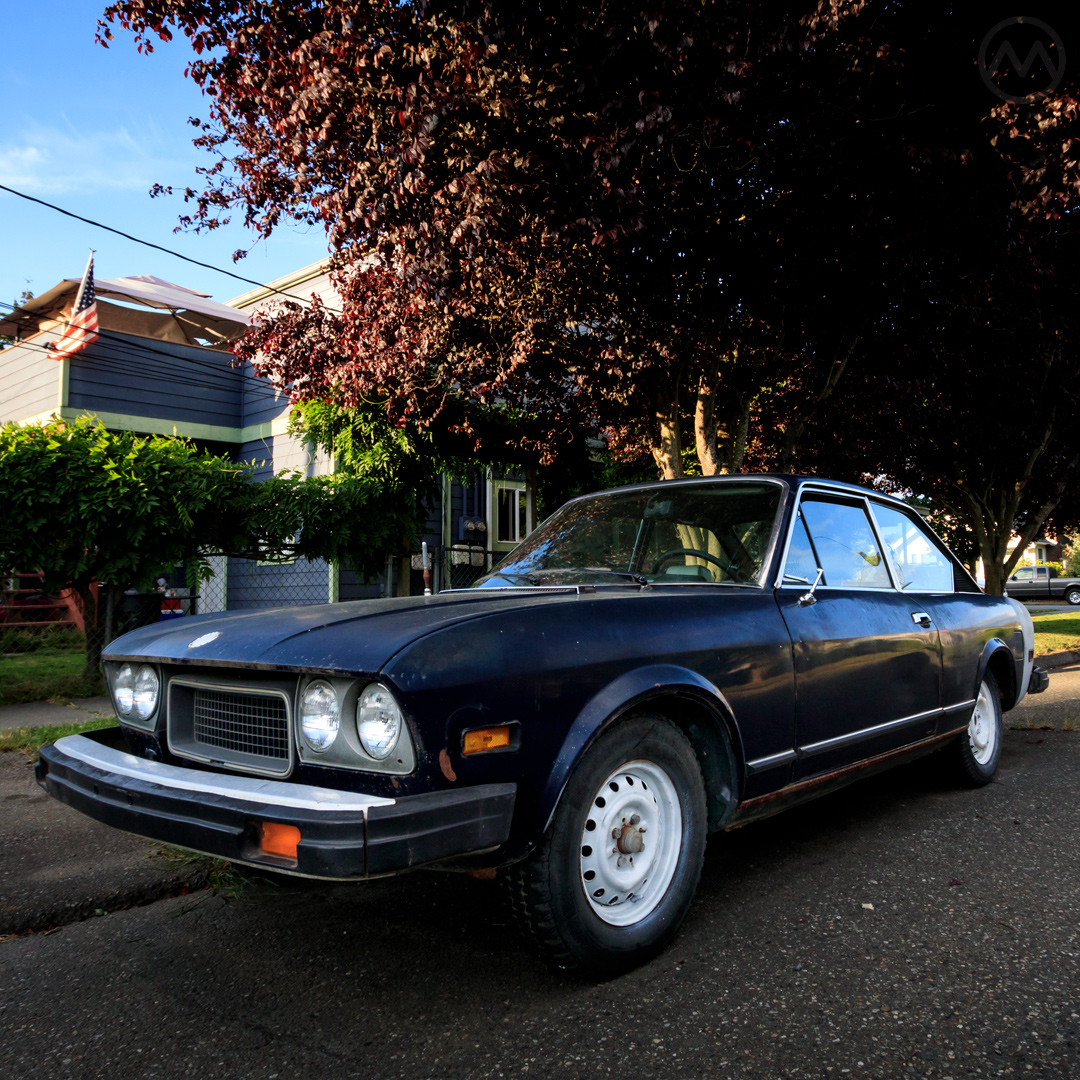
Though they weren’t necessarily intended for the USA specifically, the Capri, Manta, and Celica were all exported here starting in 1970, and in big volumes. They were the proper opposite numbers for the Fiat.
As the actual muscle car era began to fade and emissions regs and insurance rates soured Americans on GTOs and Super Bees, the smaller, lighter European and Japanese coupes soared in popularity. They were closer to the original Mustang formula, a light and simple coupe that was fun and had room, than the Mustang itself by that time.
In its final year on the market, the 124 CC coupe got a new competitor, the Mustang itself. Downsized into the Mustang II and aimed at the ever-increasing number of Capri and Celica buyers, the Mustang II was about a foot longer overall than the 124 Coupe, but very much aimed at the same buyers of small, light coupes with room for four. For that one year, 1974, the two cars faced off directly, though 124 Coupe sales had slowed by then.
The smaller coupes charged through the 1970s selling in higher and higher numbers with one exception. Fiat did not replace the 124 Coupe directly.
At home, a long period of economic contraction hurt sales, as did the big increase in competition from newer designs like the Capri and Celica and less direct rivals from Datsun and Mazda. Fiat also had the Lancia Beta Coupe to slot in where the 124 had been, having taken over that company in 1969. When the 124 faded, it was replaced by the 131, and Fiat didn’t revisit the coupe phenomenon until the 1990s.

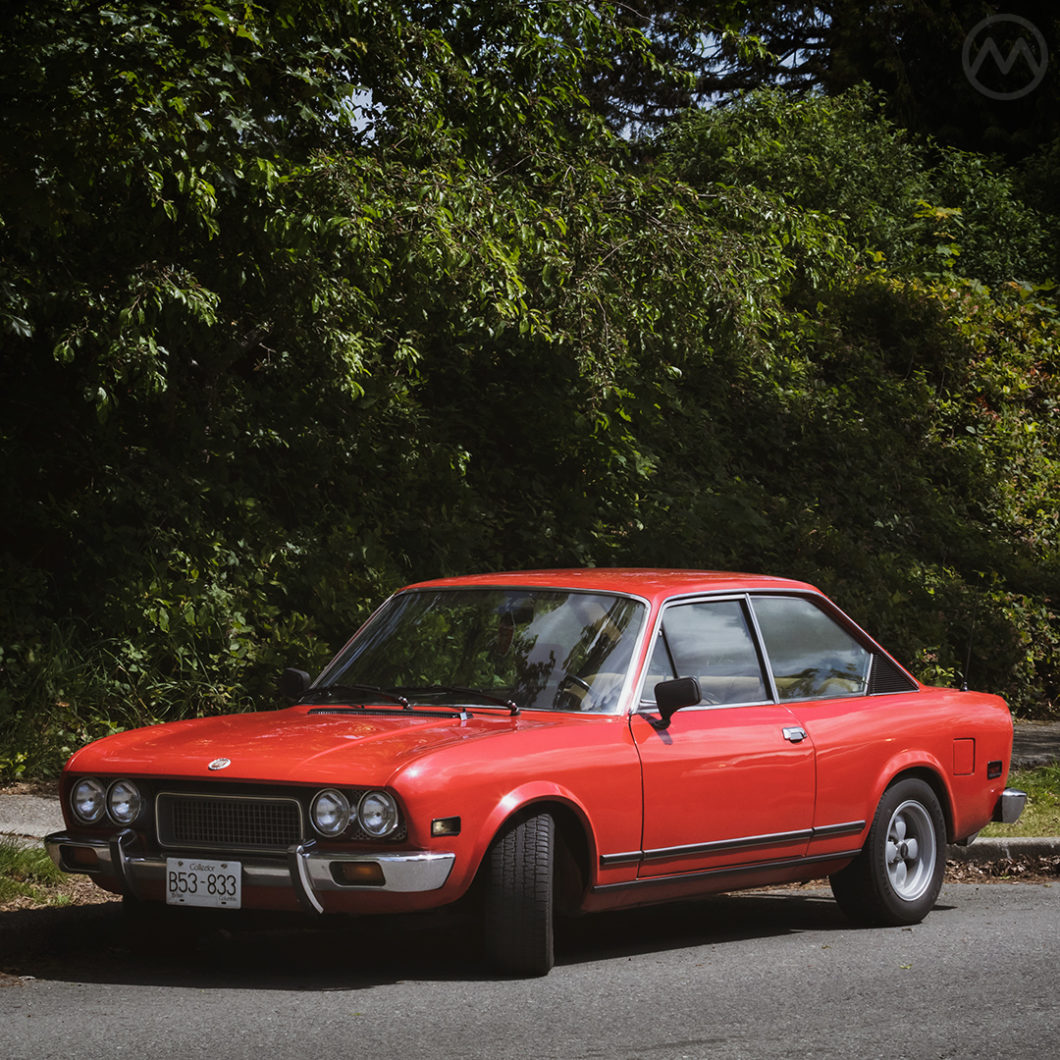
I loved these cars back when they were introduced, even before I started driving in 1972. But looking at the photo of the post-1974 model in this feature, I forgot how ugly the implemenation by Fiat of the 1974 bumper nandate was. Truly hideous.